Researchers find mechanism by which plant roots avoid oxygen-deficient soil
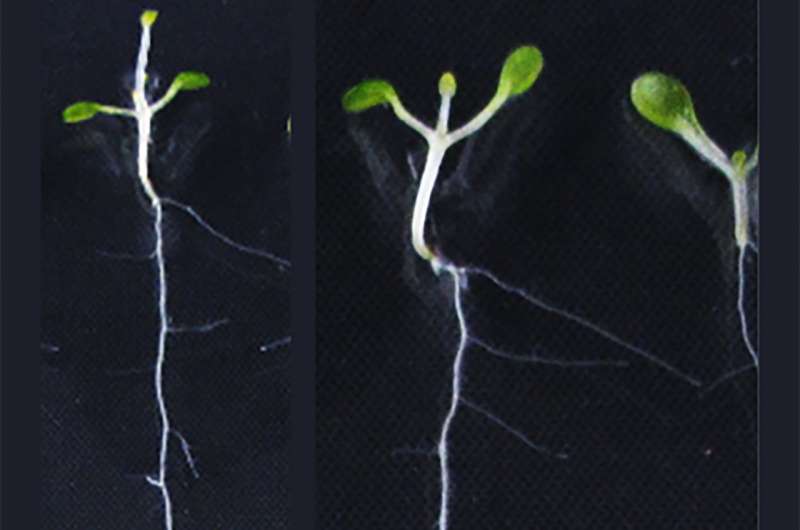
Researchers are warning about more frequently occurring extreme weather events in the future as a result of climate change. Current environmental catastrophes such as the numerous and particularly severe tropical hurricanes this year tend to confirm this trend. These extreme weather events are often accompanied by flooding, which increasingly affects agricultural land. This flooding is becoming an ever more serious problem for crop cultivation, because the majority of intensively grown crops are not very tolerant to too much water. Greater losses in yield are becoming apparent. At the same time, the pressure on the available agricultural land to produce crops is rapidly increasing in light of a growing global population.
In this context, CAU researchers in the Plant Developmental Biology and Plant Physiology research group at Kiel University's Botanical Institute are looking at the effects of global climate change on plant growth. Using the example of a model plant that is frequently used in labs, Arabidopsis thaliana, also known as thale cress, doctoral researcher Emese Eysholdt-Derzsó investigated how plants respond to low oxygen stress that results from too much water. "In her work, Eysholdt-Derzsó describes for the first time how waterlogging and the related oxygen deficiency change the growth direction of thale cress roots and she deciphered which genetic mechanisms control the plants' adaptation," emphasized the head of the research group, Professor Margret Sauter. The Kiel-based research team recently published these new findings in the research journal Plant Physiology.
Soil conditions that are wet and hence low in oxygen are life-threatening for the majority of plants because they prevent the roots from growing and from absorbing nutrients. For a certain time, however, they can adapt to waterlogging with various protective mechanisms. The researchers at Kiel University have now examined how oxygen deficiency affects the growth and the overall root structure of thale cress. To do so, they exposed seven-day-old Arabidopsis seedlings to different oxygen regimes in alternation: they were confronted with low-oxygen growth conditions for a day, followed by normal conditions for a day. The experiments showed that the roots tried to escape the low-oxygen conditions by growing to the side. To do so, the plants use a genetically determined regulatory mechanism that prevents the normal, downwards root growth. Instead, the roots grow horizontally where it is more likely to reach more oxygen-rich soil areas. "We were able to show that this process is reversible. As soon as enough oxygen was available, the roots then started normal downwards growth again," said the main author, Eysholdt-Derzsó.
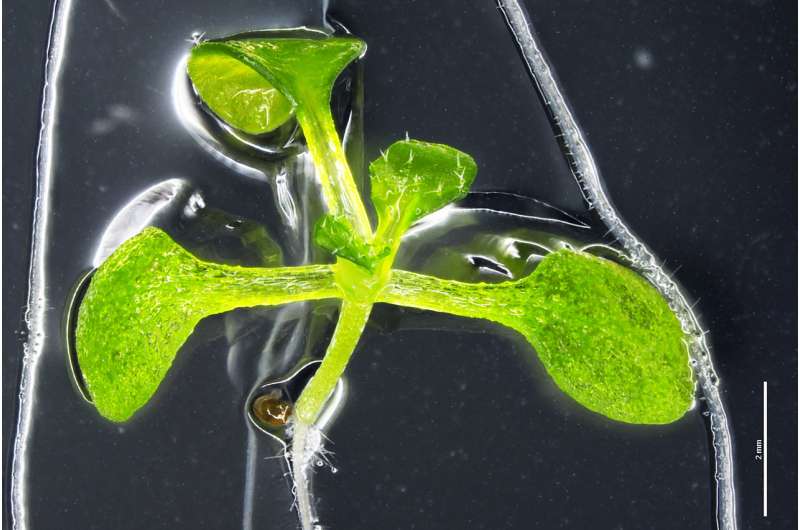
The Kiel-based scientists called this entire process 'root bending'. They were able to decipher the genetic regulation responsible for it: five of the overall 122 members of the ERF transcription factor family of thale cress are responsible for the roots responding to stress from too much water. They activate genes that ensure targeted distribution of the plant growth hormone, auxin, in the roots. As a consequence, this phytohormone is asymmetrically relocated in the root tissue. As auxin acts as an inhibitor, the root grows more slowly in places with higher concentrations of the hormone, causing the root to bend. The distribution of auxin in the root and thus the triggering of root bending can be seen with a fluorescence auxin marker.
Thale cress belongs to the crucifer plant family and is related to rapeseed or various cabbage plants. It is therefore highly likely that the findings gained from the model organism can be transferred to different crops. Future research will help to further investigate and understand the mechanism of root bending on other plants as well. The researchers' long term goal is to possibly succeed in transferring the findings to crops, in order to increase their tolerance to waterlogging in the future and thus reduce agricultural yield losses.
-
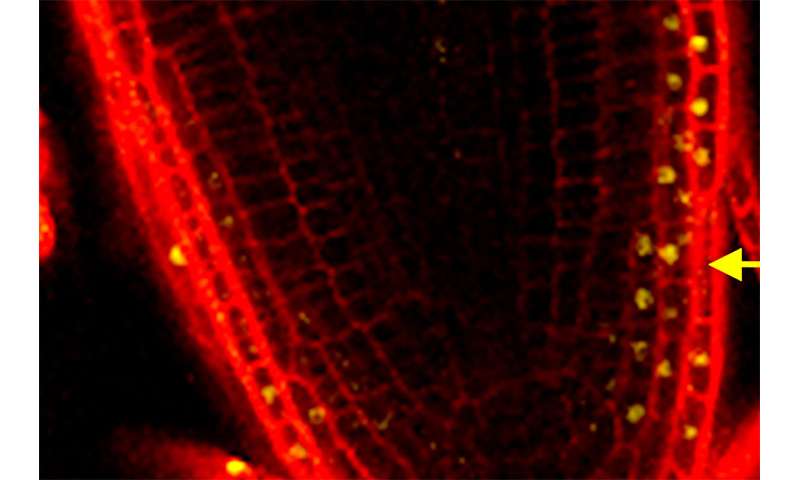
The phyto-hormone auxin (fluorescent on the right hand edge of the image) inhibits the growth on one side and bends the Arabidopsis root. Credit: Emese Eysholdt-Derzsó -
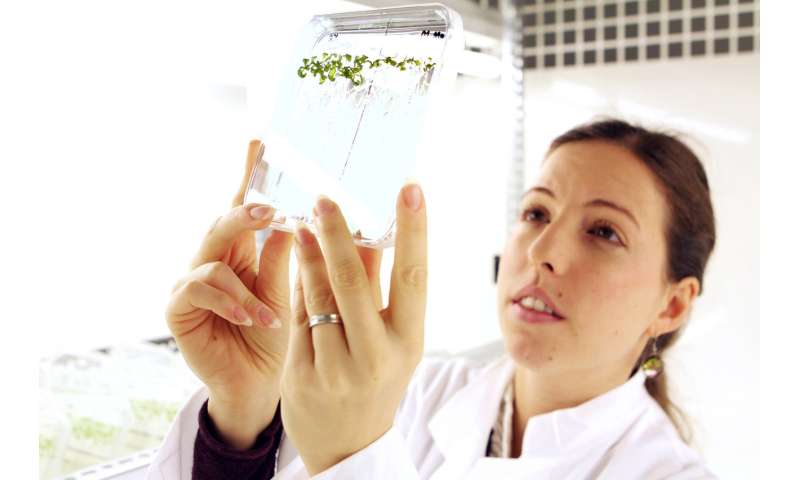
Emese Eysholdt-Derzsó, doctoral researcher in the Plant Developmental Biology and Plant Physiology research group at Kiel University, investigated root bending. Credit: Christian Urban, Kiel University -
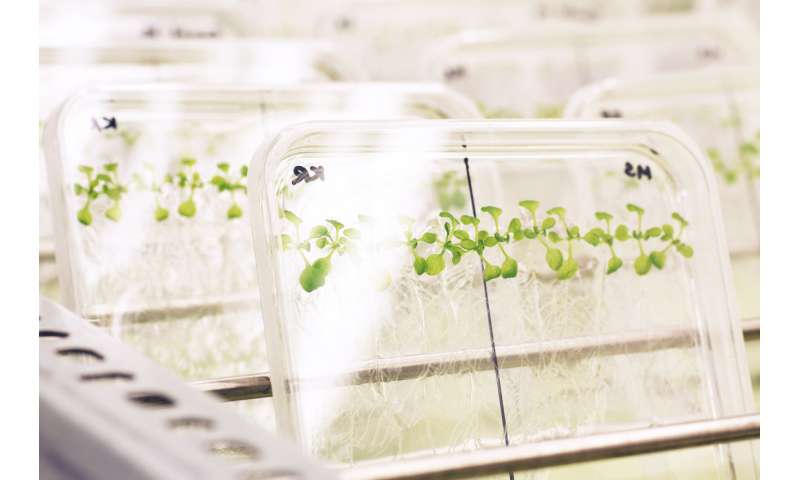
The researchers used thale cress seedlings to investigate root bending. The seedlings were grown under controlled conditions. Credit: Christian Urban, Kiel University
More information: Emese Eysholdt-Derzsó et al. Root Bending Is Antagonistically Affected by Hypoxia and ERF-Mediated Transcription via Auxin Signaling, Plant Physiology (2017). DOI: 10.1104/pp.17.00555
Provided by Kiel University





















